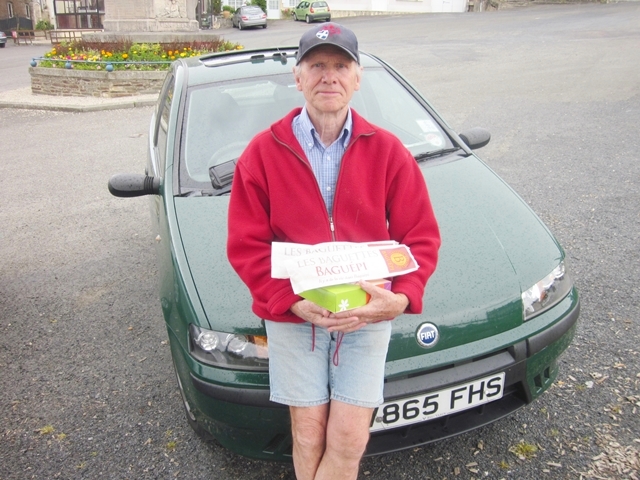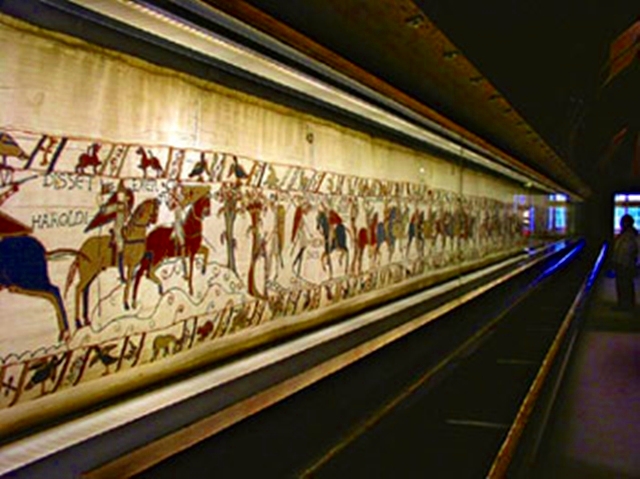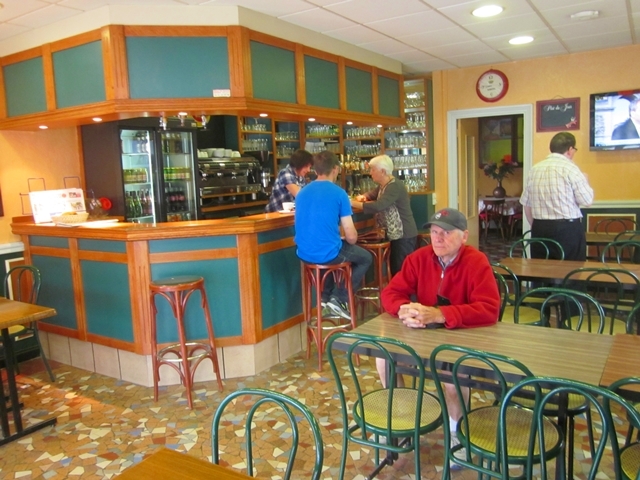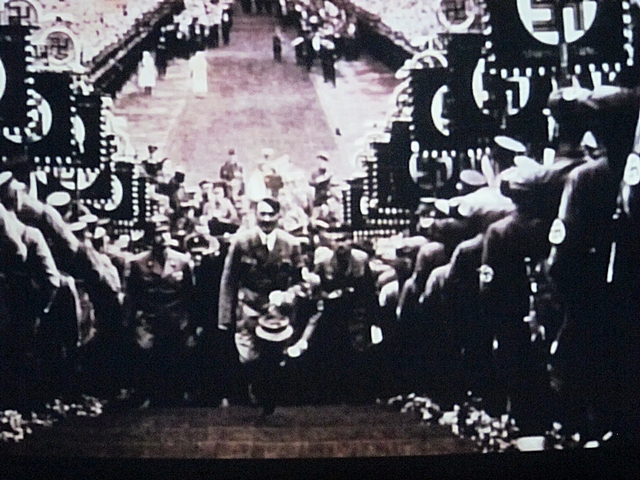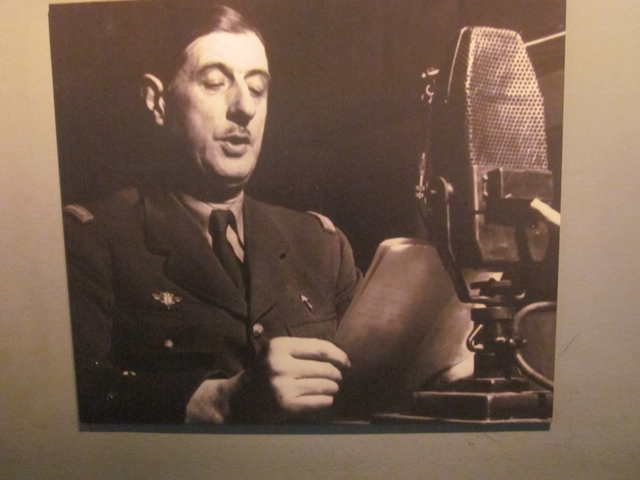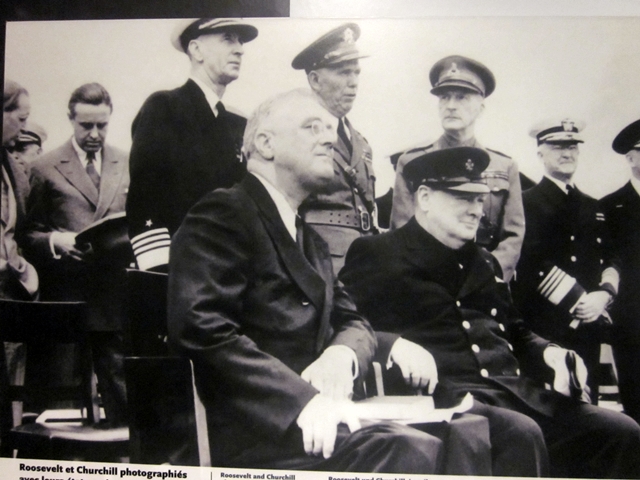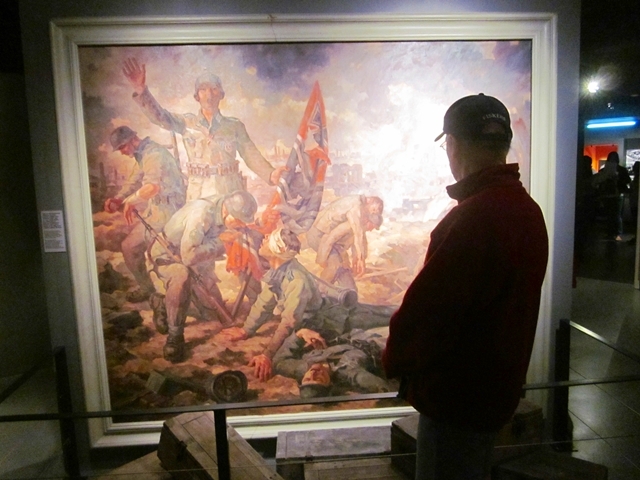Balleroy, Bayeux and Caen
The Tapestry
After leaving Mt St Michel we drove 75 miles. to Bayeux with a stop in Balleyroy. This was where Archie spent a weekend 25 years ago with a friend. He wanted to return to check it out.
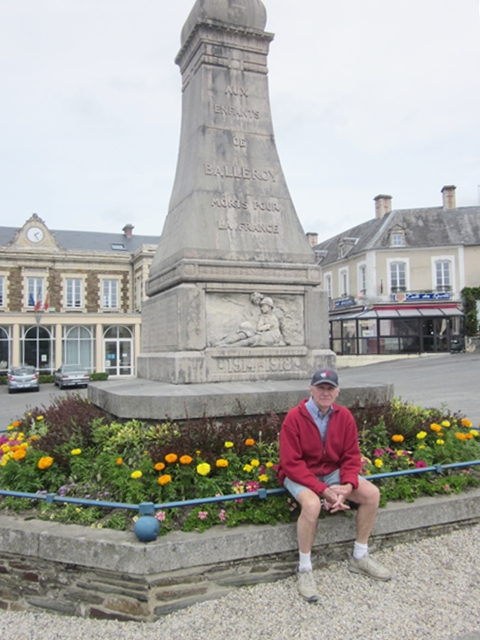
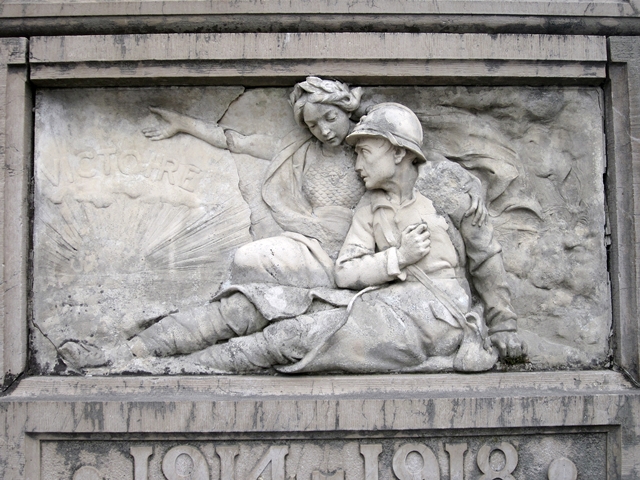 We went to the center of the town where Archie pointed out some of the places he remembered like this monument. It had an interesting relief of a dying French WWI soldier being told by an angel that victory had been achieved.
We went to the center of the town where Archie pointed out some of the places he remembered like this monument. It had an interesting relief of a dying French WWI soldier being told by an angel that victory had been achieved.
As it was lunch time AND Sunday we had some trouble finding something open. We located the “Artisan Boulangeries-Pâtisseries”” and got some sandwiches and I had a bit of pastry called an Allumettes (flaky puff pastry). It started to rain so we ate in Archie’s car and got crumbs every where. Archie had another Tart – lemon.
That was it for Balleroy and it’s sleepy, shut down main street.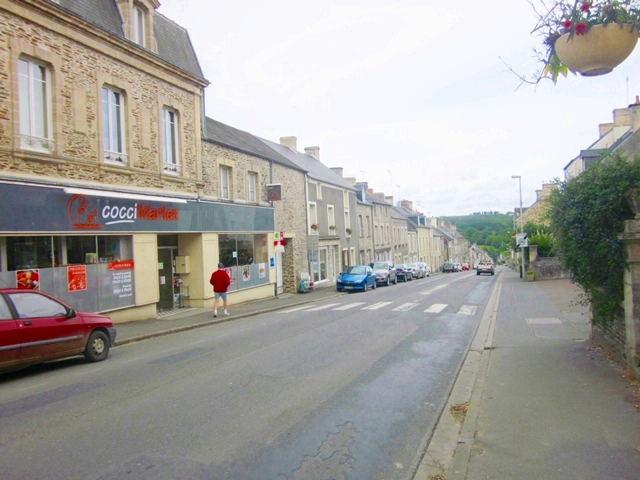
We continued on to Bayeux and arrived at the Tapestry museum about 3PM.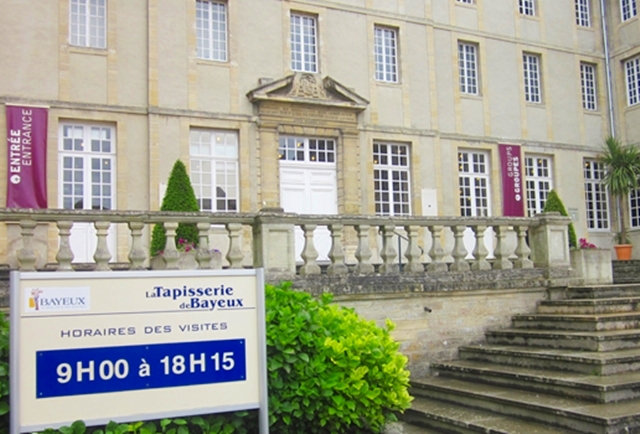
The showing of the Tapestry was done by everyone having an earpiece that describes each section of the Tapestry. Unless you stop the audio, you move along with the crowd at a slow walk. Of course, no pictures.
The Tapestry is an embroidered cloth—not an actual tapestry—nearly 230 feet long and 1.6 feet wide, It depicts the events leading up to the Norman conquest of England by William, Duke of Normandy (aka William the Conqueror) at the Battle of Hastings in 1066.
The tapestry consists of some fifty scenes with Latin captions, embroidered on linen with colored woolen yarns. It is likely that it was commissioned by Bishop Odo, William’s half-brother, and made in England—not Bayeux—in the 1070s. In 1729 the hanging was rediscovered by scholars at a time when it was being displayed annually in Bayeux Cathedral.
This is my abridged and unofficial rendition of the Tapestry story. I did the walkby twice and saw the movie before I figured out what was happening.
Edward the Confessor- King of England was aging. He chose William – Duke of Normandy (in France) the illegitimate son of Robert the Magnificent (the prior Duke of Normandy).to be his successor.
Harold Godwinson, earl of Wessex and the most powerful noble in England, was Edward’s brother-in-law. Edward sent Harold to France to tell William that he was to be king upon his (Edward’s) death. Which Harold did and he also had many adventures while in France. William may even have knighted Harold.
Harold leaves for home and meets again with the old king Edward, and about one year later Edward has become mortally ill and the tapestry strongly suggests that, on his deathbed, he bequeaths the crown to Harold. Harold proclaims himself “King of England”.
A star with a streaming tail then appears: Halley’s Comet. Comets, in the beliefs of the Middle Ages, were a bad omen.
The news of Harold’s coronation is taken to Normandy, whereupon William ordered a fleet of ships to be built The Norman (French) invaders reach England, and land unopposed. William orders his men to find food, and the Normans build a “motte and bailey“ (castle) at Hastings to defend their position. Messengers are sent between the two armies, and William prepares his army for battle.
A battle ensues and both armies are shown fighting bravely. To reassure his knights that he is still alive and well, William raises his helmet to show his face. The battle becomes very bloody with troops being slaughtered and dismembered and corpses litter the ground. King Harold is killed by an arrow in his eye.
The final remaining scene shows unarmored English troops fleeing the battlefield.
Subsequently, William becomes King and England is ruled by the French for almost 100 years and French was the official language of the Court. The Plantagenets took over in 1154. The rest is, as they say, history.
Here are a couple of scenes from the Tapestry.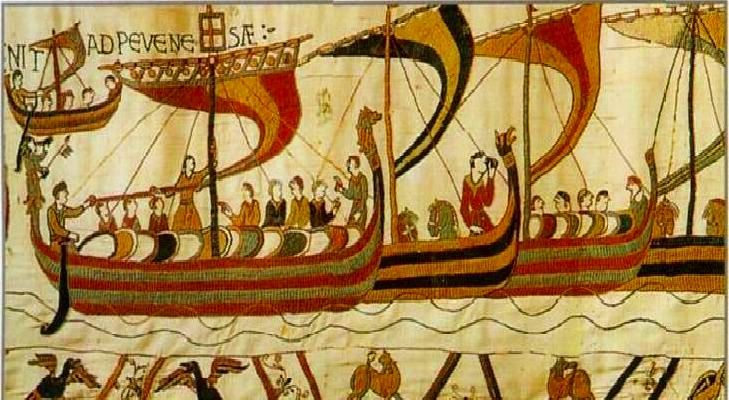 The Norman fleet heading to England:
The Norman fleet heading to England:
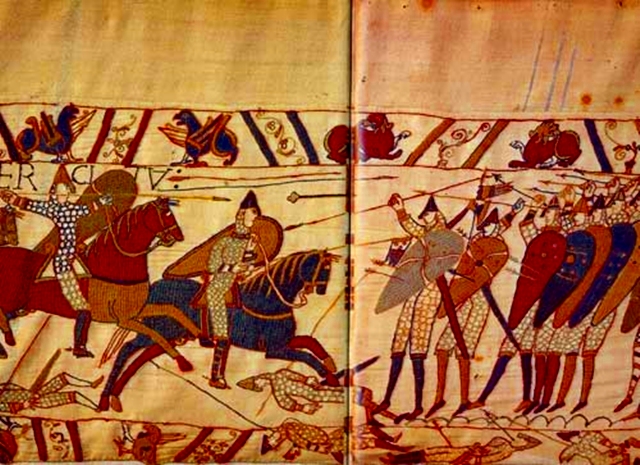 The Battle of Hastings: Normans on horses, English with shields.
The Battle of Hastings: Normans on horses, English with shields.
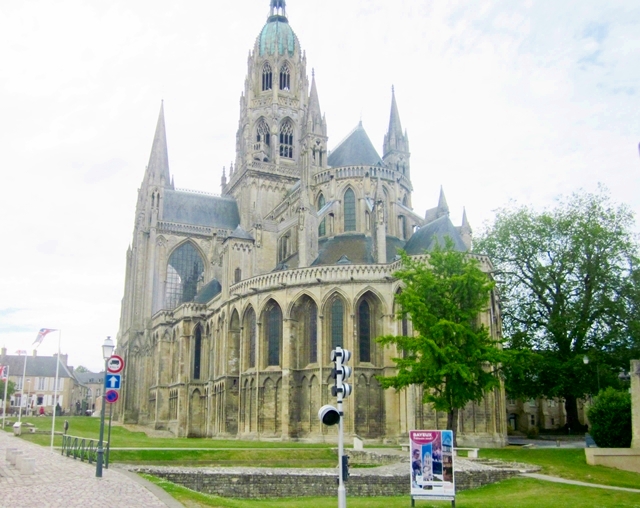 We left the museum and wandered around town a while. I visited the Cathedral where the Tapestry was supposedly displayed.
We left the museum and wandered around town a while. I visited the Cathedral where the Tapestry was supposedly displayed.
 This where the Tapestry was supposedly displayed inside the Cathedral attached to the columns of the Nave.
This where the Tapestry was supposedly displayed inside the Cathedral attached to the columns of the Nave.
It was getting late and Archie got us TWO cheap $68.00 apiece rooms at the “Hotel du Gare” plus $7.50 for breakfast. We had supper at “Subway”. A new experience for Archie. He liked the “good value for the money”.
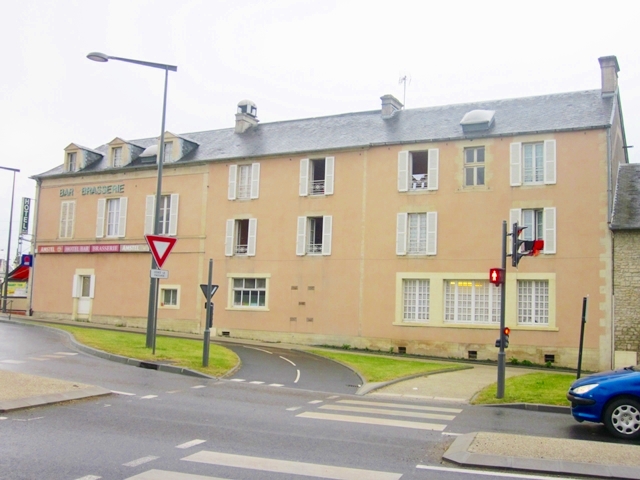 Here is the Hotel du Gare. Note my undershorts and socks drying in the window.
Here is the Hotel du Gare. Note my undershorts and socks drying in the window.
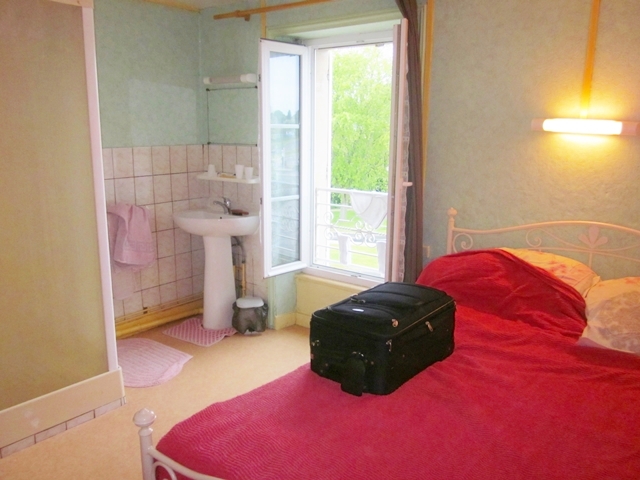 This is my room. It was spartan, it had a sink and shower but no toilet (down the hall). Note my undershorts and socks drying in the window. Back to London tomorrow.
This is my room. It was spartan, it had a sink and shower but no toilet (down the hall). Note my undershorts and socks drying in the window. Back to London tomorrow.
Our breakfast in the bar was pretty simple: a croissant, a baguette, butter and jam, and a cup of coffee. $7.50???. The place was very busy until we ate and I got up to shoot this pic. Go yo think they recognized the :Tough Ombre”?
Thus ended the 5th day and began the 6th day of my visit with Archie. He did have a good nights sleep, but he was worried that the walls would be too thin to be effective against “the chainsaw”.
We left Bayeux and headed back to the ferry to Portsmouth. On our way, we stopped in Caen for a look-see. We saw a neat old ruined church and learned that it was Saint-Étienne le-Vieux (Old St. Stephen’s).
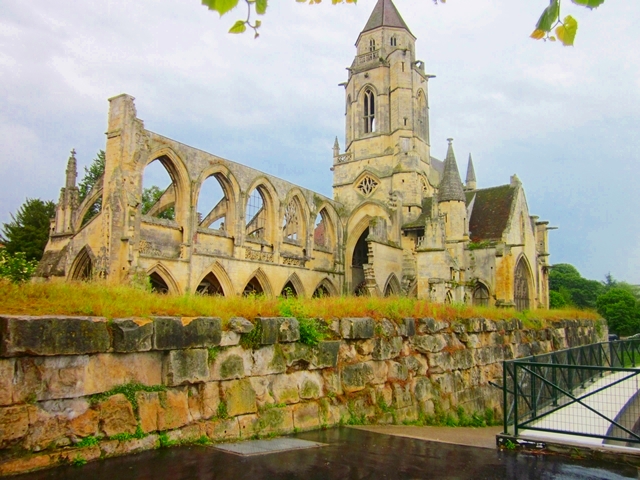 The existence of St-Etienne-le-Vieux is first recorded in 1066, but it was probably built earlier. It was then that it began to be called “Old” St. Stephen’s, because the new church at the adjacent Abbaye aux Hommes was also dedicated to St. Stephen.
The existence of St-Etienne-le-Vieux is first recorded in 1066, but it was probably built earlier. It was then that it began to be called “Old” St. Stephen’s, because the new church at the adjacent Abbaye aux Hommes was also dedicated to St. Stephen.
The original Romanesque church was destroyed during the English sieges of 1346 and 1417 (the Hundred Years War) and subsequently rebuilt in a Gothic style. During the French Revolution it was used as a stable.
The old church was saved from demolition in 1847, but was partly destroyed in a WWII bombing of 1944. It’s amazing how these old churches can hold together!
 This is the Abbaye aux Hommes in Caen, which was also dedicated to St. Stephen.
This is the Abbaye aux Hommes in Caen, which was also dedicated to St. Stephen.
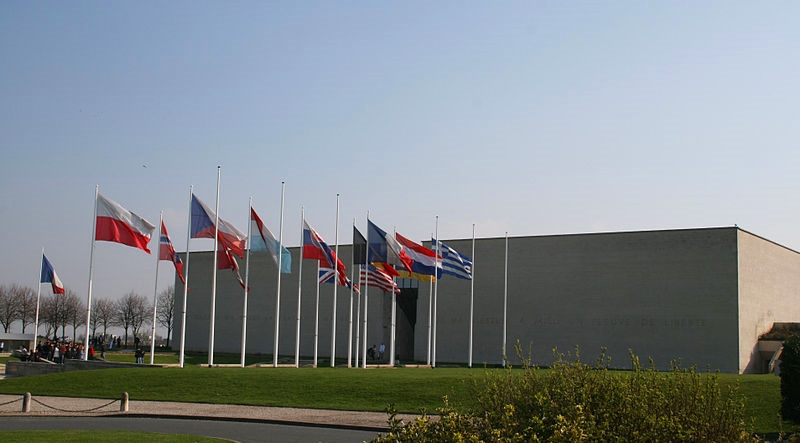 We left downtown Caen and visited “The Memorial”. This is a museum dedicated to remembering WWII. There were lots of photos, paintings, and artifacts relating to the whole of WWII all over the world.
We left downtown Caen and visited “The Memorial”. This is a museum dedicated to remembering WWII. There were lots of photos, paintings, and artifacts relating to the whole of WWII all over the world.
We didn’t have enough time to see everything – had to get to the ferry. I did snap a couple of pics The bottom painting depicts Stalingrad:
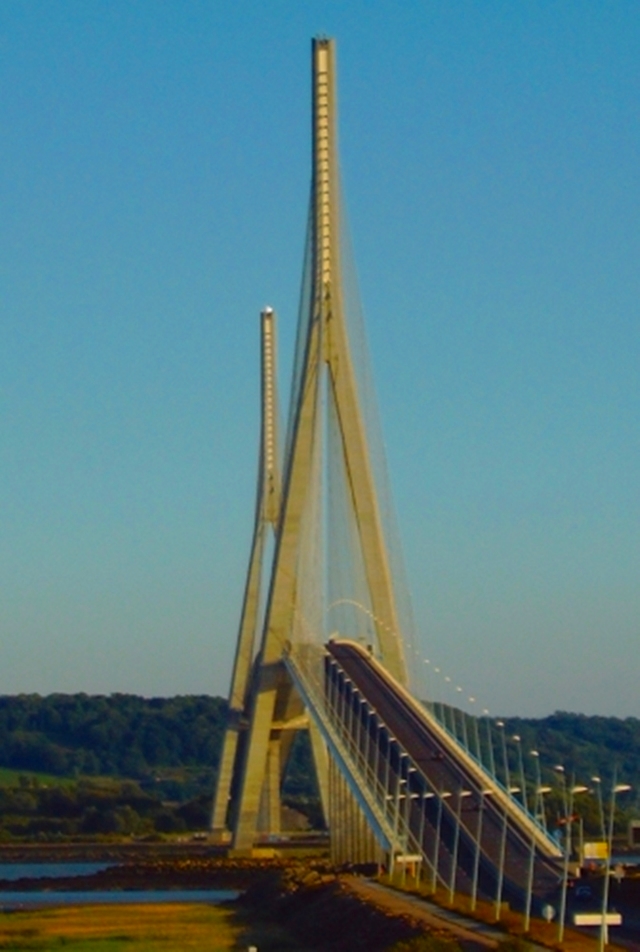 This is the “Pont du Normandy over the river Seine. Archie let me drive over it on our way west, but he overcame his fear of heights on our trip and drove it himself on our way back. (Maybe because of my driving??)
This is the “Pont du Normandy over the river Seine. Archie let me drive over it on our way west, but he overcame his fear of heights on our trip and drove it himself on our way back. (Maybe because of my driving??)
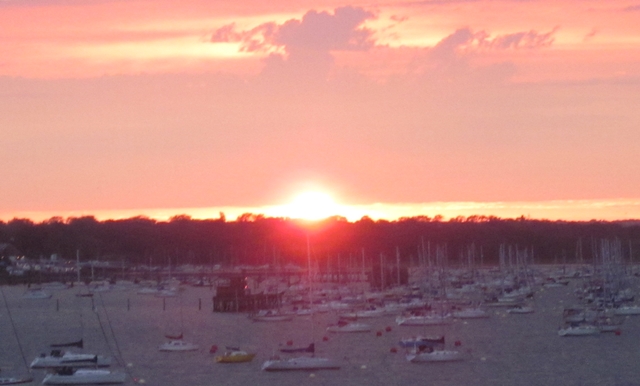 We made it to the ferry and crossed Le Manche (The English Channel) and back to Archie’s place in London by midnight. It was a Fish and Chip dinner on the ferry.
We made it to the ferry and crossed Le Manche (The English Channel) and back to Archie’s place in London by midnight. It was a Fish and Chip dinner on the ferry.
So ended the 6th day of my visit with Archie. Read/see more on Page 08…

